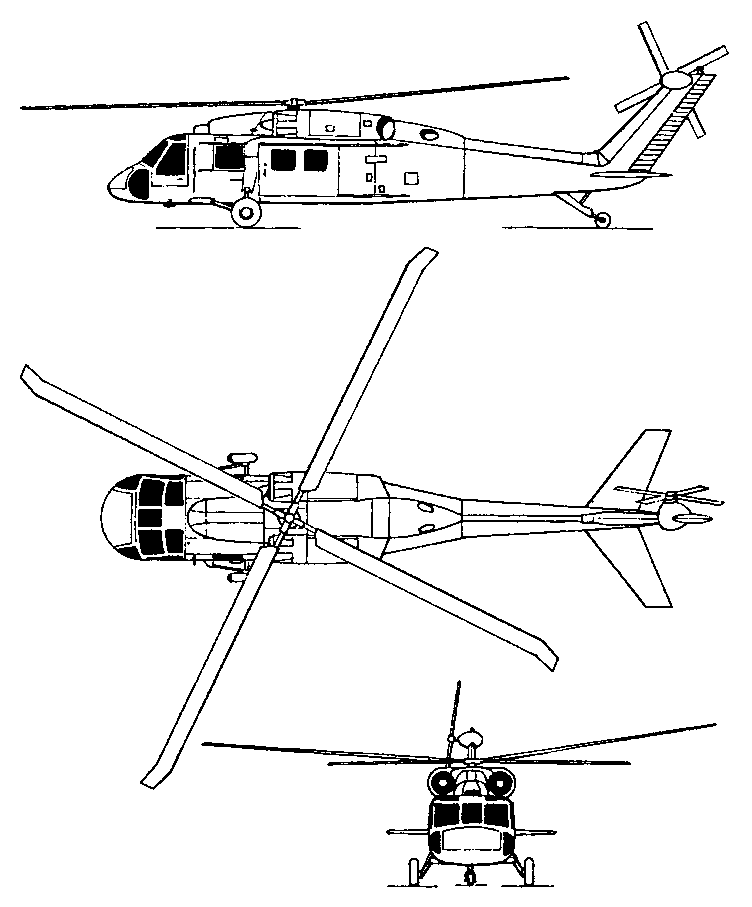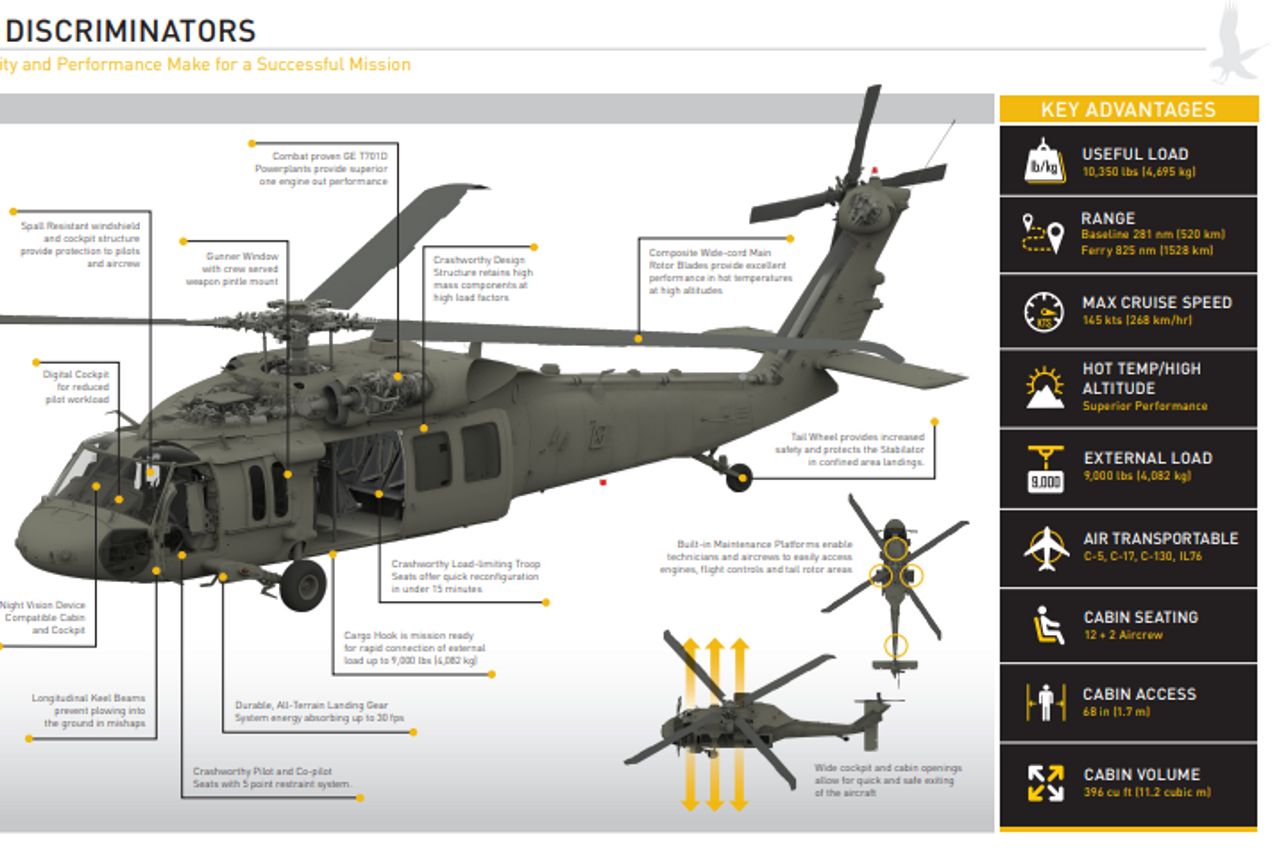Unveiling the Sikorsky S 70: Developments and Advancements in Helicopter Engineering
High-Performance Multi-Role Rotorcraft Featuring Advanced Cockpit Technologies and Integrated Sensor Solutions
The realm of rotorcraft innovation has actually seen notable innovations in current times, specifically in the world of high-performance multi-role rotorcraft geared up with advanced cabin technologies and effortlessly incorporated sensing unit systems. These technologies have not only increased the operational abilities of rotorcraft yet have additionally significantly influenced modern aviation procedures on different fronts. From boosted goal adaptability to boosted functional effectiveness, the convergence of sophisticated cabin modern technologies and integrated sensor systems has ushered in a new era of opportunities for rotorcraft applications. In the following discussion, we will explore the development of rotorcraft innovation, dig right into the realm of sophisticated cockpit innovations, and take a look at the effects of incorporated sensing unit systems on the functional flexibility and efficiency of contemporary rotorcraft.
Development of Rotorcraft Technology
The advancement of rotorcraft modern technology has actually been marked by significant advancements in aerodynamics, materials, and propulsion systems, forming the abilities and efficiency of contemporary rotorcraft. Aerodynamic improvements have boosted the effectiveness and ability to move of rotorcraft, permitting increased rate, agility, and stability during trip (sikorsky s 70). Advancements in products, such as the use of composite products and advanced alloys, have led to lighter yet stronger rotorcraft frameworks, boosting total efficiency and toughness. Additionally, improvements in propulsion systems, including extra effective engines and ingenious propulsion innovations, have actually made it possible for rotorcraft to accomplish higher altitudes, faster speeds, and better payloads.
These improvements have not just changed the abilities of rotorcraft yet have actually also increased their applications throughout various industries, consisting of military, business, and emergency solutions. The continual development of rotorcraft modern technology continues to drive technology in the area, pressing the borders of what is feasible and shaping the future of vertical trip.
Advanced Cabin Innovations
Structure upon the fundamental innovations in the rules of aerodynamics, products, and propulsion systems, the realm of rotorcraft technology now changes focus towards pioneering Advanced Cockpit Innovations. The integration of sophisticated modern technologies within the cockpit setting plays a vital role in improving the functional abilities, safety and security, and efficiency of contemporary rotorcraft. sikorsky s 70. Advanced Cockpit Innovations include a broad variety of attributes developed to supply pilots with improved situational recognition, structured data monitoring, and user-friendly control user interfaces
One of the essential advancements in cabin style is the execution of glass cockpits, which replace traditional analog gauges with high-resolution screens. These electronic systems provide personalized designs, real-time data assimilation, and boosted readability, making it possible for pilots to access important details at a glimpse. Moreover, advanced avionics systems, such as fly-by-wire controls and boosted truth display screens, are changing just how pilots connect with the airplane, enabling precise control and improved decision-making capabilities.


Incorporating advanced cockpit developments not only boosts pilot efficiency yet additionally adds to total objective efficiency and safety in complex operational atmospheres. By leveraging cutting edge modern technologies within the cabin, rotorcraft makers are setting new requirements for functional excellence and goal success.
Integrated Sensor Systems
With the development of rotorcraft modern technology, the integration of innovative Integrated Sensing unit Systems has actually become critical in enhancing operational efficiency and safety and security. These Integrated Sensing unit Solutions include a large selection of modern technologies that give important data for various features such as navigation, security, targeting, and ecological surveillance. By perfectly integrating sensors like radars, cameras, lidar, and infrared systems right into rotorcraft, operators can gain from improved situational awareness, improved objective abilities, and lowered pilot workload.
One trick benefit of Integrated Sensing unit Systems is their ability to collect real-time information and provide workable insights to pilots and goal drivers. Progressed radar systems can spot and track i loved this targets over long distances, enabling for early hazard detection and reliable feedback preparation. In addition, integrating electro-optical and infrared video cameras makes it possible for rotorcraft to perform reconnaissance and monitoring objectives with precision and precision.
Essentially, the assimilation of innovative sensing unit modern technologies into rotorcraft not just enhances operational performance yet additionally contributes significantly to general objective success and team safety and security. As rotorcraft proceed to advance, the duty of Integrated Sensing unit Systems will most certainly continue to be at the leading edge of innovation in the aerospace market.
Functional Adaptability and Efficiency
Enhancing functional convenience and performance in rotorcraft is a natural development from the assimilation of sophisticated Integrated Sensor Systems. By leveraging the data and understandings provided by these sophisticated sensing unit systems, rotorcraft can maximize their efficiency across different objectives and settings.
Functional adaptability incorporates the capability of rotorcraft to adjust to different functions and circumstances effectively. With sophisticated cockpit modern technologies and integrated sensing unit systems, rotorcraft can effortlessly shift between jobs such as search and rescue, clinical emptying, monitoring, and much more. This convenience enhances the rotorcraft's capacity to fulfill varied operational needs without needing extensive reconfiguration.
Performance in rotorcraft procedures is critical for maximizing goal efficiency and source application. Integrated sensor systems play a crucial role in enhancing functional efficiency by giving real-time data on weather problems, surface mapping, target tracking, and much more. This information enables pilots to make educated decisions quickly, optimize trip paths, save gas, and boost overall goal efficiency.
Influence On Modern Air Travel Operations

In addition, the integration of sophisticated sensing units assists in improved objective planning and implementation, enabling rotorcraft to do a large range of jobs with enhanced precision. From search and rescue operations to airborne firefighting and law enforcement goals, the abilities of modern-day rotorcraft geared up with advanced cockpit modern technologies and integrated sensing unit systems are exceptional.
Furthermore, the effect of these innovations prolongs beyond operational performance to cost-effectiveness and sustainability. By maximizing flight routes, gas usage, and upkeep schedules, high-performance rotorcraft equipped with sophisticated cockpit modern technologies and sensing units add to minimizing functional prices and ecological effect, making them crucial assets in modern-day air travel operations.
Final Thought
In verdict, the high-performance multi-role rotorcraft with advanced cockpit modern technologies and integrated sensor systems stands for a significant development in aeronautics modern technology. These advancements enhance operational flexibility and performance, ultimately impacting modern-day aeronautics operations in a favorable means. The combination of these advanced modern technologies permits for boosted capacities and performance in different goal circumstances, showcasing the continued improvement of rotorcraft innovation in the air travel market.
The world of rotorcraft innovation has seen noteworthy advancements in recent times, particularly in the realm of high-performance multi-role rotorcraft furnished with innovative cockpit modern technologies and effortlessly incorporated sensor systems. From enhanced goal flexibility to boosted operational performance, the convergence of innovative cockpit technologies and incorporated sensing unit systems has actually ushered in a new period of possibilities for rotorcraft applications. In the adhering to conversation, we will certainly discover the evolution of rotorcraft innovation, delve into the world of sophisticated cabin developments, and examine the ramifications of integrated sensor systems on the operational convenience and performance of contemporary rotorcraft.
